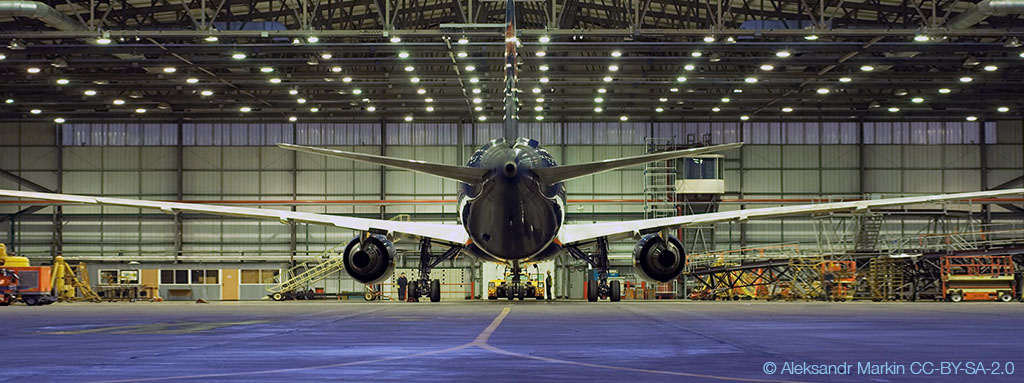There is a lower pseudo-limit which is very difficult to exceed when setting a round number for the amount of kilos of rolled steel an industrial unit will consume.
When it comes to designing a hangar or an industrial unit, there is a curious magical number which is common to all of them and determines the amount of steel needed for their construction.
A unit is generally a metal or mixed structure (steel for the roofing and concrete for the pillars) which usually covers large clear spans without using intermediate pillars in its construction. The unit may either be temporary or permanent and the way to cover it can either be done through tarpaulins or sandwich panels. In the airport context, they are almost always used as hangars. The use of tarpaulins must therefore be discarded, since these may fall on the aircraft, helicopters, etc. parked inside due to the weight of snow or be blown away by strong winds. In any case, the use for which a unit has been conceived should never be forgotten; in other words, it should be stable, resistant and have the limited deformations required for maintenance, repairs and storage.
There are a large number of variables which will finally define the rolled steel sections needed for a permanent industrial unit. These include the clear span between the main pillars, the distance between gateways, the roof’s shape, its height, the presence or lack of bridge cranes, along with the various load hypotheses that impact the unit, such as its own weight, the wind, earthquakes, snow, etc.
Some variables are obviously much more important than others in the final calculation. However, the magical number all of them arrive at is 45 Kg/m². What does this number mean? Basically, we can obtain the total number of kilos required for the unit based on the area we need to cover and multiply it by that number. Once it has been obtained, we only have to multiply this value by the price of steel per kilo to arrive at a very close approximation of the structure’s price.
However, not everything is that easy, since there are some ifs and buts or disadvantages in the approximation mentioned above. These include:
- The use of a type of steel with a lower yield strength (235 N/mm2) as opposed to a type of steel with a higher yield strength (355 N/mm2) involves distortions in aforementioned calculated value.
- Wider clear spans, as from 40-50 metres. Once this distance is exceeded, the unit’s kg/m² value starts to rise because it increases exponentially to the fourth power due to the clear span (L^4) in order to maintain the deformations which have been imposed.
- Placing bridge cranes which hang from the roof’s main structure and not resting on pillars.
To make an analogy with boxing, we can conclude by saying, and almost affirming, that “any” unit (maximum clear span of 50 metres, S275 steel and any possible bridge cranes placed on pillars) will be at least in the light flyweight class. Its weight will be 45 Kg/m². From this point on, no other scheme will have an effect on our unit.



